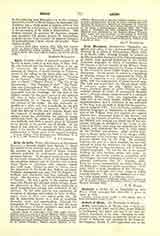

Arias de Avila, Pedro (also known as PEDRARIAS DAVILA), a Spanish knight from Segovia, b. about the middle of the fifteenth century; d. at Leon, 1530. He married an intimate friend of Queen Isabella (whence probably his preferment) and saw some service in Europe. At the age of nearly seventy years he was made commander (1514) of the largest Spanish expedition hitherto sent to America, and reached Santa Marta in Colombia with nineteen vessels and 1,500 men. Thence he went to Darien, where the discoverer of the South Sea, Balboa, governed. Pedrarias superseded him, gave him his daughter in wedlock, and afterwards had him judicially murdered. (See Balboa.) In 1519 he founded the city of Panama. He was a party to the original agreement with Pizarro and Almagro which brought about the discovery of Peru, but withdrew (1526) for a small compensation, having lost confidence in the outcome. In the same year he was superseded as Governor of Panama and retired to Leon in Nicaragua, where he died, over eighty years old. He left an unenviable record, as a man of unreliable character, cruel, and unscrupulous. Through his foundation of Panama, however, he laid the basis for the discovery of South America‘s west coast and the subsequent conquest of Peru.
AD. F. BANDELIER

